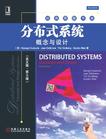分布式系统
出版时间:2012-10 出版社:机械工业出版社 作者:(英)库鲁里斯 等著 页数:389
Tag标签:无
内容概要
从移动电话到互联网,我们的生活越来越依赖于以无缝和透明的方式将计算机和其他设备链接在一起的分布式系统。本书全面介绍分布式系统的设计原理和实践及其最新进展,并使用大量最新的实例研究来阐明分布式系统的设计与开发方法。
《分布式系统概念与设计(英文版.第5版)》前几版已被爱丁堡大学、伊利诺伊大学、卡内基—梅隆大学、南加州大学、得克萨斯a&m大学、多伦多大学、罗切斯特理工学院、北京大学等众多名校选用为教材。第5版在上一版的基础上,新增了三章内容,分别介绍间接通信、分布式对象和组件、分布式系统设计(以google为例)。
作者简介
作者:(英国)库鲁里斯(Coulouris G.) (英国)Jean Dollimore (英国)Tim Kindberg (英国)Gordon Blair 库鲁里斯(Coulouris G.),伦敦大学皇后玛利学院荣誉教授,剑桥大学计算机实验室访问教授。 Jean Dollimore,伦敦大学皇后玛利学院的高级讲师。 Tim Kindberg,matter 2 media创新技术公司创始人,Pervasive Media Studio研究主任,英国布里斯托尔和美国帕洛阿尔托惠普实验室高级研究员,英国巴斯大学计算机科学系访问教授。 Gordon Blair,兰卡斯特大学计算系分布式系统教授,挪威特罗姆瑟大学兼职教授。
书籍目录
目录回到顶部↑
《分布式系统概念与设计(英文版.第5版)》
preface
1 characterization of distributed systems
1.1 introduction
1.2 examples of distributed systems
1.3 trends in distributed systems
1.4 focus on resource sharing
1.5 challenges
1.6 case study: the world wide web
1.7 summary
2 system models
2.1 introduction
2.2 physical models
2.3 architectural models
2.4 fundamental models
2.5 summary
3 networking and internetworking
3.1 introduction
3.2 types of network
3.3 network principles
.3.4 internet
protocols
3.5 case studies: ethernet, wifi and bluetooth
3.6 summary
4 interprocess communication
4.1 introduction
4.2 the apl for the internet protocols
4.3 external data representation and marshalling
4.4 multicast communication
4.5 networkvirtualization: overlay networks
4.6 case study: mpi
4.7 summary
5 remote invocation
5.1 introduction
5.2 request-reply protocols
5.3 remote procedure call
5.4 remote method invocation
5.5 case study: java rmi
5.6 summary
6 indirect communication
6.1 introduction
6.2 group communication
6.3 publish-subscribe systems
6.4 message queues
6.5 shared memory approaches
6.6 summary
7 operating system support
7.1 introduction
7.2 the operating system layer
7.3 protection
7.4 processes and threads
7.5 communication and invocation
7.6 operating system architecture
7.7 virtualization at the operating system level
7.8 summary
8 distributed objectsand components
8.1 introduction
8.2 distributed objects
8.3 case study: corba
8.4 from objects to components
8.5 case studies: enterprise javabeans and fractal
8.6 summary
9 web services
9.1 introduction
9.2 web services
9.3 service descriptions and idl for web services
9.4 a directory service for use with web services
9.5 xml security
9.6 coordination of web services
9.7 applications of web services
9.8 summary
10 peer-to-peer systems
10.1 introduction
10.2 napster and its legacy
10.3 peer-to-peer middleware
10.4 routing overlays
10.5 overlay case studies: pastry, tapestry
10.6 application case studies: squirrel, oceanstore, ivy
10.7 summary
11 security
11.1 introduction
11.2 overview of security techniques
11.3 cryptographic algorithms
11.4 digital signatures
11.5 cryptography pragmatics
11.6 case studies: needham-schroeder, kerberos, tls, 802.11
wifi
11.7 summary
12 distributed file systems
12.1 introduction
12.2 file service architecture
12.3 case study: sun network file system
12.4 case study: the andrew file system
12.5 enhancements and further developments
12.6 summary
13 name services
13.1 introduction
13.2 name services and the domain name system
13.3 directory services
13.4 case study: the global name service
13.5 case study: the x.500 directory service
13.6 summary
14 time and global states
14.1 introduction
14.2 clocks, events and process states
14.3 synchronizing physical clocks
14.4 logical time and logical clocks
14.5 global states
14.6 distributed debugging
14.7 summary
15 coordination and agreement
15.1 introduction
15.2 distributed mutual exclusion
15.3 elections
15.4 coordination and agreement in group communication
15.5 consensus and related problems
15.6 summary
16 transactions and concurrency control
16.1 introduction
16.2 transactions
16.3 nested transactions
16.4 locks
16.5 optimistic concurrency control
16.6 timestamp ordering
16.7 comparison of methods for concurrency control
16.8 summary
17 distributed transactions
17.1 introduction
17.2 flat and nested distributed transactions
17.3 atomic commit protocols
17.4 concurrency control in distributed transactions
17.5 distributed deadlocks
17.6 transaction recovery
17.7 summary
18 replication
18.1 introduction
18.2 system model and the role of group communication
18.3 fault-tolerant services
18.4 case studies of highly available services: the gossip
architecture, bayou and coda
18.5 transactions with replicated data
18.6 summary
19 mobile and ubiquitous computing
19.1 introduction
19.2 association
19.3 interoperation
19.4 sensing and context awareness
19.5 security and privacy
19.6 adaptation
19.7 case study: cooltown
19.8 summary
20 distributed multimedia systems
20.1 introduction
20.2 characteristics of multimedia data
20.3 quality of service management
20.4 resource management
20.5 stream adaptation
20.6 case studies: tiger, bittorrent and end system multicast
20.7 summary
21 designing distributed systems: google case study
21.1 introduction
21.2 introducing the case study: goggle
21.3 overall architecture and design philosophy
21.4 underlying communication paradigms
21.5 data storage and coordination services
21.6 distributed computation services
21.7 summary
references
index
章节摘录
版权页: 插图: CORBA's common data representation, which is concerned with an external representation for the structured and primitive types that can be passed as the arguments and results of remote method invocations in CORBA. It can be used by a variety of programming languages (see Chapter 8). Java's object serialization, which is concerned with the flattening and external data representation of any single object or tree of objects that may need to be transmitted in a message or stored on a disk. It is for use only by Java. XML (Extensible Markup Language), which defines a textual fomat for representing structured data. It was originally intended for documents containing textual self-describing structured data - for example documents accessible on the Web - but it is now also used to represent the data sent in messages exchanged by clients and servers in web services (see Chapter 9). In the first two cases, the marshalling and unmarshalling activities are intended to be carried out by a middleware layer without any involvement on the part of the application programmer. Even in the case of XML, which is textual and therefore more accessible to hand-encoding, software for marshalling and unmarshalling is available for all commonly used platforms and programming environments. Because marshalling requires the consideration of all the finest details of the representation of the primitive components of composite objects, the process is likely to be error-prone if carried out by hand. Compactness is another issue that can be addressed in the design of automatically generated marshalling procedures. In the first two approaches, the primitive data types are marshalled into a binary form. In the third approach (XML), the primitive data types are represented textually.
编辑推荐
《分布式系统:概念与设计(英文版•第5版)》由机械工业出版社出版。
图书封面
图书标签Tags
无
评论、评分、阅读与下载
用户评论 (总计4条)
- 刚收到书,书的纸张很薄,但也不要出问题,书挺厚的看来得花一些时间了。
- 111111111111111111111`````````````````````
- 对得起价格,纸张是够差的
- 机械工业出版社的书向来这样,尤其是越厚的书,纸质越差。内容来说,是这方面的经典教科书,应该不错。大四闲着没事读一读,希望以后能用到。
